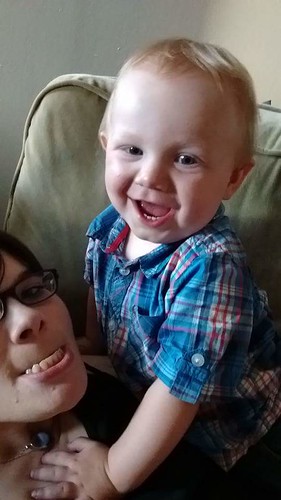Pe among different species but different between three a2-AR subtypes. The ICL1 of a2A-AR, a2B-AR and a2C-AR have the sequence of ALK, SLR and ALR, 3PO site respectively (Fig. 1A). We have previously demonstrated that Leu48 residue, but not Arg49 residue, in the ICL1 is essential for the ER export and cell-surface transport of a2B-AR [38]. Here we determined the effect of mutating Leu64 and Lys65 on the cell-surface number of a2A-AR. We first measured the saturation binding of the radioligand [3H]-RX821002 to a2AAR in intact live HEK293 cells. The ligand dose-dependently bound to a2A-AR and the binding was close to saturation at 20 nM (Fig. 1B). Wild-type a2A-AR and its mutants 1676428 L64A, K65A and LK-AA were transiently expressed in HEK293 cells and their cell-surface expression at steady state was measured by intact cell ligand binding using [3H]-RX821002 at 20 nM. Consistent with the remarkable 374913-63-0 inhibitory effect of mutation of Leu48 on a2B-AR cellsurface expression, mutation of Leu64 markedly reduced the cellsurface number of a2A-AR by 87 . Surprisingly, in contrast to mutation of Arg49 which did not have significant effects on a2BAR cell-surface expression, mutation of Lys65 to Ala significantly attenuated a2A-AR expression at the cell surface by 52 . Double mutation of Leu48/Arg49 in a2B-AR and Leu64/Lys65 a2A-AR almost abolished their cell-surface transport (Fig. 1C and 1D). To exclude the possibility that these mutations could influence a2AAR binding to the ligand, a2A-AR and its mutants were tagged with HA at their N-termini and their cell-surface expression was measured by flow cytometry following staining with anti-HA antibodies in nonpermeabilized cells. The cell-surface expression of the mutants L64A, K65A and LK-AA was reduced by 81, 58 and 93 , respectively, as compared with their wild-type counterpart (Fig. 1E). To determine if these mutations could alter the total expression of the receptors, a2A-AR and a2B-AR and their mutants tagged with GFP at their C-termini were transiently expressed in HEK293 cells and their overall expression was determined by flow cytometry measuring the GFP signal. In contrast to the cell-surface expression, these mutations did not significantly alter the overall expression of a2A-AR (Fig. 1C) and a2B-AR (Fig. 1D). These data, together our previous data [38], demonstrate that the single Leu  residue in the ICL1 plays a general role in the cell-surface transport of GPCRs, whereas its neighboring positively charged residue may differentially regulate the cell-surface targeting of a2A-AR and a2B-AR.Intracellular Accumulation of a2A-AR Induced by Mutation of Leu64 and LysTo further confirm the inhibitory effect of mutation of Leu64 and Lys65 on the cell-surface transport of a2A-AR, the subcellular distribution of GFP-tagged a2A-AR and its mutants in HEK293 cells was visualized by confocal microscopy. As expected, wild-type a2A-AR was robustly expressed at the cell surface. Mutation of Leu64 and Lys65 to Ala individually or in combination caused a remarkable accumulation of a2A-AR in the perinuclear region (Fig. 2). To determine if the effect of the mutations on the subcellular distribution of 1527786 a2A-AR is cell-type specific, GFP-tagged a2A-AR and its mutants were transiently expressed in HeLa cells. SimilarFigure 1. Effects of the mutation of Leu residues and their neighboring positively charged residues in the ICL1 on the cell-surface and total expression of a2A-AR and a2B-AR. (A) The sequence of the ICL1 of a2A-AR,.Pe among different species but different between three a2-AR subtypes. The ICL1 of a2A-AR, a2B-AR and a2C-AR have the sequence of ALK, SLR and ALR, respectively (Fig. 1A). We have previously demonstrated that Leu48 residue, but not Arg49 residue, in the ICL1 is essential for the ER export and cell-surface transport of a2B-AR [38]. Here we determined the effect of mutating Leu64 and Lys65 on the cell-surface number of a2A-AR. We first measured the saturation binding of the radioligand [3H]-RX821002 to a2AAR in intact live HEK293 cells. The ligand dose-dependently bound to a2A-AR and the binding was close to saturation at 20 nM (Fig. 1B). Wild-type a2A-AR and its mutants 1676428 L64A, K65A and LK-AA were transiently expressed in HEK293 cells and their cell-surface expression at steady state was measured by intact cell ligand binding using [3H]-RX821002 at 20 nM. Consistent with the remarkable inhibitory effect of mutation of Leu48 on a2B-AR cellsurface expression, mutation of Leu64 markedly reduced the cellsurface number of a2A-AR by 87 . Surprisingly, in contrast to mutation of Arg49 which did not have significant effects on a2BAR cell-surface expression, mutation of Lys65 to Ala significantly attenuated a2A-AR expression at the cell surface by 52 . Double mutation of Leu48/Arg49 in a2B-AR and Leu64/Lys65 a2A-AR almost abolished their cell-surface transport (Fig. 1C and 1D). To exclude the possibility that these mutations could influence a2AAR binding to the ligand, a2A-AR and its mutants were tagged with HA at their N-termini and their cell-surface expression was measured by flow cytometry following staining with
residue in the ICL1 plays a general role in the cell-surface transport of GPCRs, whereas its neighboring positively charged residue may differentially regulate the cell-surface targeting of a2A-AR and a2B-AR.Intracellular Accumulation of a2A-AR Induced by Mutation of Leu64 and LysTo further confirm the inhibitory effect of mutation of Leu64 and Lys65 on the cell-surface transport of a2A-AR, the subcellular distribution of GFP-tagged a2A-AR and its mutants in HEK293 cells was visualized by confocal microscopy. As expected, wild-type a2A-AR was robustly expressed at the cell surface. Mutation of Leu64 and Lys65 to Ala individually or in combination caused a remarkable accumulation of a2A-AR in the perinuclear region (Fig. 2). To determine if the effect of the mutations on the subcellular distribution of 1527786 a2A-AR is cell-type specific, GFP-tagged a2A-AR and its mutants were transiently expressed in HeLa cells. SimilarFigure 1. Effects of the mutation of Leu residues and their neighboring positively charged residues in the ICL1 on the cell-surface and total expression of a2A-AR and a2B-AR. (A) The sequence of the ICL1 of a2A-AR,.Pe among different species but different between three a2-AR subtypes. The ICL1 of a2A-AR, a2B-AR and a2C-AR have the sequence of ALK, SLR and ALR, respectively (Fig. 1A). We have previously demonstrated that Leu48 residue, but not Arg49 residue, in the ICL1 is essential for the ER export and cell-surface transport of a2B-AR [38]. Here we determined the effect of mutating Leu64 and Lys65 on the cell-surface number of a2A-AR. We first measured the saturation binding of the radioligand [3H]-RX821002 to a2AAR in intact live HEK293 cells. The ligand dose-dependently bound to a2A-AR and the binding was close to saturation at 20 nM (Fig. 1B). Wild-type a2A-AR and its mutants 1676428 L64A, K65A and LK-AA were transiently expressed in HEK293 cells and their cell-surface expression at steady state was measured by intact cell ligand binding using [3H]-RX821002 at 20 nM. Consistent with the remarkable inhibitory effect of mutation of Leu48 on a2B-AR cellsurface expression, mutation of Leu64 markedly reduced the cellsurface number of a2A-AR by 87 . Surprisingly, in contrast to mutation of Arg49 which did not have significant effects on a2BAR cell-surface expression, mutation of Lys65 to Ala significantly attenuated a2A-AR expression at the cell surface by 52 . Double mutation of Leu48/Arg49 in a2B-AR and Leu64/Lys65 a2A-AR almost abolished their cell-surface transport (Fig. 1C and 1D). To exclude the possibility that these mutations could influence a2AAR binding to the ligand, a2A-AR and its mutants were tagged with HA at their N-termini and their cell-surface expression was measured by flow cytometry following staining with  anti-HA antibodies in nonpermeabilized cells. The cell-surface expression of the mutants L64A, K65A and LK-AA was reduced by 81, 58 and 93 , respectively, as compared with their wild-type counterpart (Fig. 1E). To determine if these mutations could alter the total expression of the receptors, a2A-AR and a2B-AR and their mutants tagged with GFP at their C-termini were transiently expressed in HEK293 cells and their overall expression was determined by flow cytometry measuring the GFP signal. In contrast to the cell-surface expression, these mutations did not significantly alter the overall expression of a2A-AR (Fig. 1C) and a2B-AR (Fig. 1D). These data, together our previous data [38], demonstrate that the single Leu residue in the ICL1 plays a general role in the cell-surface transport of GPCRs, whereas its neighboring positively charged residue may differentially regulate the cell-surface targeting of a2A-AR and a2B-AR.Intracellular Accumulation of a2A-AR Induced by Mutation of Leu64 and LysTo further confirm the inhibitory effect of mutation of Leu64 and Lys65 on the cell-surface transport of a2A-AR, the subcellular distribution of GFP-tagged a2A-AR and its mutants in HEK293 cells was visualized by confocal microscopy. As expected, wild-type a2A-AR was robustly expressed at the cell surface. Mutation of Leu64 and Lys65 to Ala individually or in combination caused a remarkable accumulation of a2A-AR in the perinuclear region (Fig. 2). To determine if the effect of the mutations on the subcellular distribution of 1527786 a2A-AR is cell-type specific, GFP-tagged a2A-AR and its mutants were transiently expressed in HeLa cells. SimilarFigure 1. Effects of the mutation of Leu residues and their neighboring positively charged residues in the ICL1 on the cell-surface and total expression of a2A-AR and a2B-AR. (A) The sequence of the ICL1 of a2A-AR,.
anti-HA antibodies in nonpermeabilized cells. The cell-surface expression of the mutants L64A, K65A and LK-AA was reduced by 81, 58 and 93 , respectively, as compared with their wild-type counterpart (Fig. 1E). To determine if these mutations could alter the total expression of the receptors, a2A-AR and a2B-AR and their mutants tagged with GFP at their C-termini were transiently expressed in HEK293 cells and their overall expression was determined by flow cytometry measuring the GFP signal. In contrast to the cell-surface expression, these mutations did not significantly alter the overall expression of a2A-AR (Fig. 1C) and a2B-AR (Fig. 1D). These data, together our previous data [38], demonstrate that the single Leu residue in the ICL1 plays a general role in the cell-surface transport of GPCRs, whereas its neighboring positively charged residue may differentially regulate the cell-surface targeting of a2A-AR and a2B-AR.Intracellular Accumulation of a2A-AR Induced by Mutation of Leu64 and LysTo further confirm the inhibitory effect of mutation of Leu64 and Lys65 on the cell-surface transport of a2A-AR, the subcellular distribution of GFP-tagged a2A-AR and its mutants in HEK293 cells was visualized by confocal microscopy. As expected, wild-type a2A-AR was robustly expressed at the cell surface. Mutation of Leu64 and Lys65 to Ala individually or in combination caused a remarkable accumulation of a2A-AR in the perinuclear region (Fig. 2). To determine if the effect of the mutations on the subcellular distribution of 1527786 a2A-AR is cell-type specific, GFP-tagged a2A-AR and its mutants were transiently expressed in HeLa cells. SimilarFigure 1. Effects of the mutation of Leu residues and their neighboring positively charged residues in the ICL1 on the cell-surface and total expression of a2A-AR and a2B-AR. (A) The sequence of the ICL1 of a2A-AR,.